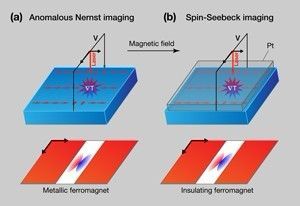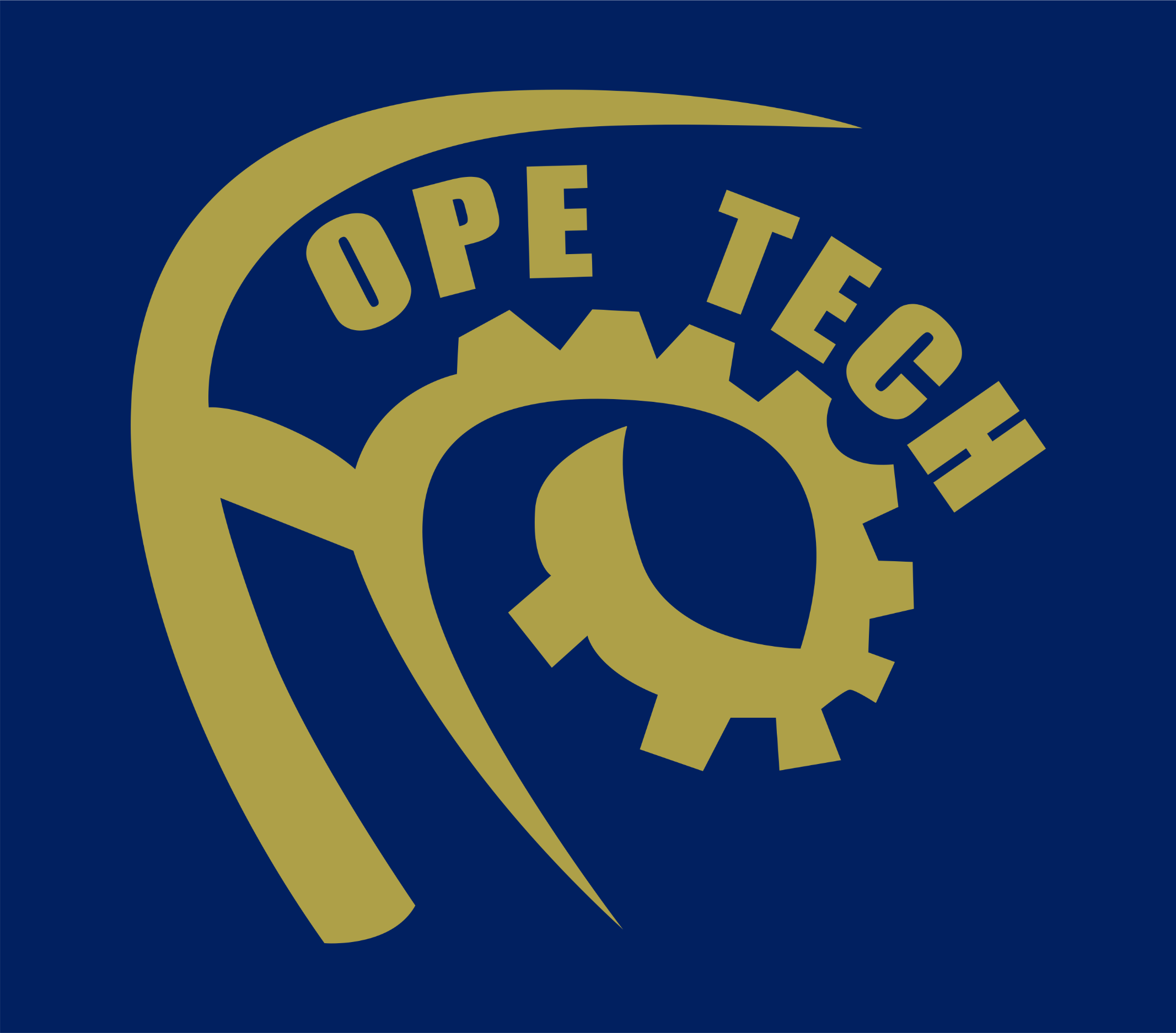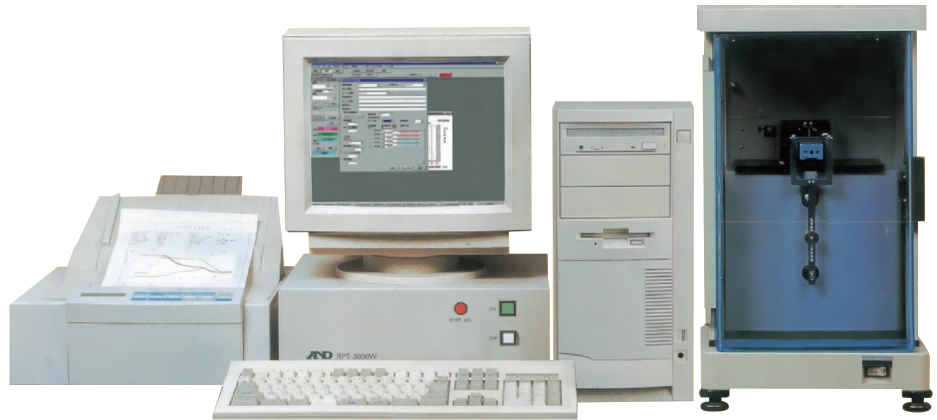
Figure 1 A scanned laser beam reveals magnetic textures through (a) the anomalous Nernst effect and (b) the spin Seebeck effect. The orientation of the local magnetization (red arrows) is mapped out by scanning a laser-generated hot spot across a sample while measuring a voltage produced by the anomalous Nernst or the spin Seebeck effect for conducting and insulating ferromagnets, respectively. The planes below show the output magnetic spin structure resulting from the measurement, with red parallel to the magnetic field, white perpendicular, and blue antiparallel.
In spintronics, it is important to know the local magnetic environment of the material through which a spin-carrying current moves. However, the usual methods for detecting spin currents with voltage probes average across the length of the sample. Now, a team of researchers at the Walther Miessner Institute, Bavarian Academy of Sciences in Garching, Germany, have developed a new optothermal method for imaging magnetic domain structure and writing local spin currents in both electrically conducting and insulating ferromagnetic materials [1]. By rastering a laser beam across a thin-film ferromagnetic sample, Mathias Weiler and co-workers induce local temperature gradients, , under the laser spot that translate into a measurable charge voltage. In the case of an insulating ferromagnet thin film, the local temperature gradient generates a local spin current and provides a new experimental scheme for generating and probing spin caloritronic effects [2], which are heat-spin interactions, at smaller length scales. Additionally, the signals provide information on magnetic anisotropy in much the same way that magnetoresistance can, but with the added benefit of spatial resolution that might be used to reveal the effect of crystalline defects on the magnetic anisotropy.
The conversion of temperature gradients into charge voltages occurs by the thermoelectric, or Seebeck, effect and is due to a redistribution of charges along the applied temperature gradient. The thermoelectric effect is used for temperature sensing in thermocouples, electricity production in thermoelectric generators, and for solid-state (Peltier effect) refrigerators. The Seebeck voltage can be changed into a transverse voltage by applying a magnetic field that pushes electrons to one side by the Lorentz force. Physically, this “Nernst-Ettingshausen effect” operates exactly like the Hall effect, but results from charge diffusion under the presence of , rather than from an applied electric bias. In another similarity with the Hall effect, the transverse Nernst voltage can be observed in ferromagnetic materials even when no magnetic field is applied, because the internal magnetic fields from the magnetization also generate a Lorentz force. This is called the anomalous Nernst effect (ANE).
Normally, one measures ANE by applying a uniform temperature gradient and then one picks up the induced transverse voltage. However, that measurement averages the entire magnetization of the sample. Weiler et al. have altered this approach by using a laser to locally generate temperature gradients that induce a transverse electric field through ANE. If the local magnetization direction changes (as in a domain wall) the induced transverse voltage also changes [see Fig. 1(a)]. This method provides a scanned probe type approach to ANE and a new method for imaging the magnetic texture of ferromagnets. As in the anomalous Hall effect, ANE is sensitive to the magnetization orientation, but it can only occur in materials with mobile charges (metals or doped semiconductors).
But what about ferromagnetic insulators? Here is where the spin Seebeck effect comes in. The effect had only been observed by two teams in the world before [3, 4, 5, 6], yet the researchers realized that it could be put to good use to image magnetic domains in the absence of free electrons. To perform local measurements of the spin Seebeck effect, Weiler et al. deposited a platinum layer on top of their insulating ferromagnetic thin film [(Fig. 1(b)]. When the laser beam generates a thermal gradient, a spin current is generated in the ferromagnetic insulator, which flows into the platinum layer. The spin current gets selectively scattered to one side of the platinum contact through the inverse spin Hall effect [7], resulting in an electric field within the platinum layer. In this case, the induced charge voltage depends on the magnitude and sign of the thermally induced spin current, which in turn depends on the local magnetization direction. The spin current generated under the laser spot is therefore locally sensitive to the domain orientation, providing a method for imaging domains and other nonuniform texture in ferromagnetic insulators.
By merging spin caloritronic effects with thermal imaging, Weiler et al. have created a flexible and general method for exploring magnetic texture, anisotropy, and local thermal spin pumping. In the future, one might imagine increasing the resolution of the technique by reducing the laser spot further with a near-field fiber tip. This scanned approach also provides interesting opportunities for combinatorial study of the impact of materials properties on spin caloritronic effects. For example, one might create a sample where interface, chemical composition, or heterostructure design is varied laterally, and observe how these effects systematically affect the spin Seebeck effect.








